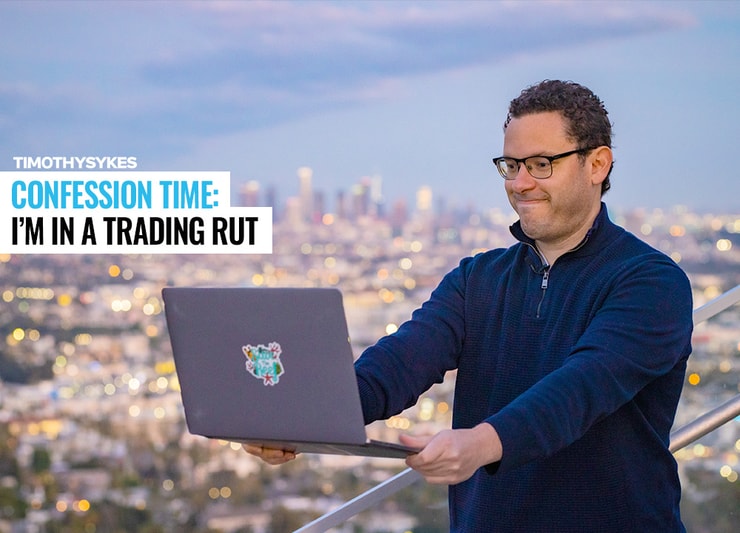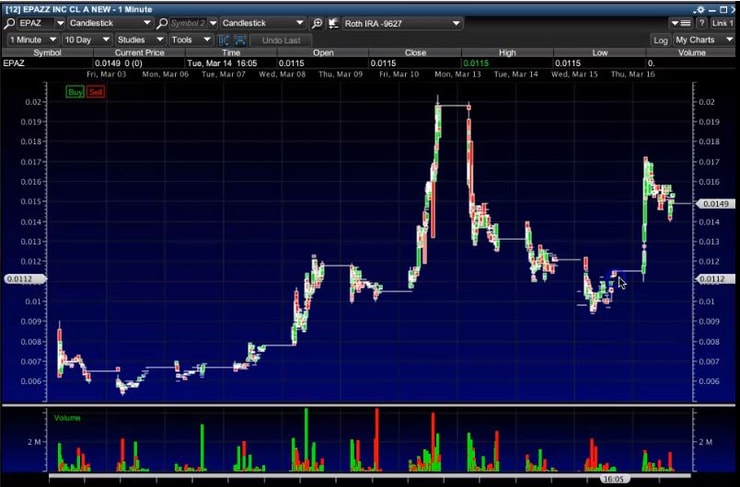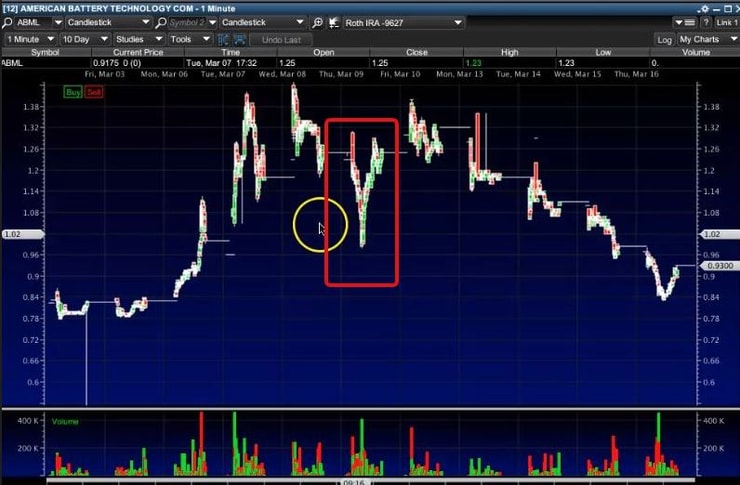Trading is a beast with teeth…
And it doesn’t care who you are or how much experience you have.
You’re going to have days where you feel like a god…and others where you’re wondering why even bother.
It’s just the nature of the game.
And right now, I’m in the thick of it.
Even with over 20 years under my belt, I’m still getting my butt kicked from time to time.
But instead of whining and blaming the market or bad luck for my failures, I sit down, grit my teeth, and analyze every last decision I’ve made.
I want to know where I’m screwing up, and what I can do to fix it. Because let me tell you, if I’m going through these struggles, then you better believe will too at some point.
I’ve mentored over 30 students who’ve become millionaire traders
And I can tell you straight up…
Success in trading is a rocky road.
But you know what’s cheaper than paying the market through trading losses?
Learning from my mistakes.
So if you’re feeling like you’re in a rut, pay attention.
This could be the important thing you read today.
Figuring Out What’s Going Wrong

2025 Millionaire Media, LLCOver the first two weeks of March my trading hasn’t gone anywhere.
But instead of blaming the markets I sit down and analyze my trades.
I then share my insights with my challenge students so they can learn from them too.
So what have I noticed that’s different in my trading?
I’m trying too hard.
Now, this is also a problem I see from a lot of newbie traders. They want to make money so bad that they force trades.
Maybe they feel pressure from their family and friends because they were told that trading is a waste of time and that they’re likely going to lose money…
So they try to move fast so they can prove them wrong.
For me, I’ve already proven myself. And I have over 30 millionaire students, proving that what I teach can work.
But if I stay in front of my computer screen for too long…I have the tendency to force trades.
There have been some good opportunities in the market.
However, my eagerness has gotten the better of me.
Recent Trade Example

2025 Millionaire Media, LLCLast Tuesday I saw a panic dip buy opportunity in the ticker symbol EPAZ.
It looked like there was one giant seller, which gave me the impression that once the seller was out, the stock would rip higher.
I also noticed that the stock had a ton of support at the $0.093 to $0.094. Knowing where support is gives you a better idea on where you can get out.
The stock didn’t make an immediate bounce…and given all the volatility in the market…I decided to play it safe and get out for a tiny gain.
Of course, shortly after I exited the position, the stock rallied nearly 70%
LOL.
With that fresh in my mind…I was thinking I wasn’t going to miss the next EPAZ.
The next day…I saw a dip buying opportunity in another recent big runner trading off its highs and near support level. It was in the ticker symbol ABML.
Now, if it did anything close to what EPAZ did I figured my execution didn’t have to be that precise.
Here’s where I went WRONG:
- I wasn’t thinking about the downside
- I was watching the stock too early
- I wasn’t patient…I was thinking I don’t want to miss this
- I was trying too hard
So I got in at $0.94…
But that was a bad entry…support was near the $0.83 to $0.85 level.
Again, I had the wrong mindset.
When I’m on my game, I don’t mind missing a trade if it’s not at my levels.
But I was feeling antsy.
So when the stock started to downtick, I quickly bailed taking a small loss.
I re-entered again later in the afternoon, this time closer to the support level.
But because the bounce didn’t happen quickly enough…I cut this trade too for a small loss. Had I been more patient the second time around, I would have been able to get a decent win out of it.
To my credit, I’m taking losses quickly.
However, I am not happy with my overtrading.
One thing I’m constantly telling myself is that this isn’t the market for pressing the action. I made $1.076 million in trading profits in 2021 because that was a hot market. When things cooled off in 2022, a down year for most traders, I remained patient, and managed to make $130K in profits.
2023 is a slow year so far. That means I need to trade less and wait for the right opportunities. Overtrading hasn’t helped me, and I need to get back on track.
This is what I’ve been telling my students.
If you’re struggling right now, don’t blame the markets. Dig into your trades and analyze where you’re going wrong.
I do it every day. And while I might be in a mini-slump right now…it won’t be long until I get back on track.
If you found this helpful, and want to learn more about the program that’s helped over 30 of my students become millionaires then check out this link.











Leave a reply